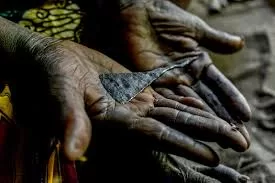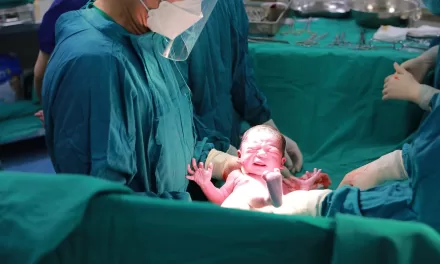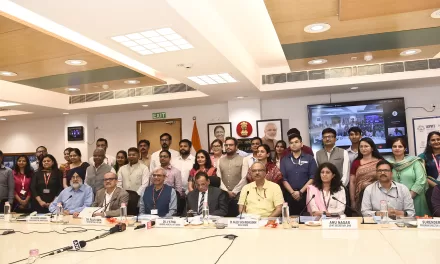The International Day of Zero Tolerance for female genital mutilation (FGM), observed annually on 6 February, provides an opportunity to highlight progress and raise awareness to end this harmful practice.
From community leaders to health workers and family members, everyone has a role to play. This year, with the theme Step up the Pace, there is a focus on strengthening alliances and building movements to end FGM.
Female genital mutilation is a violation of human rights that inflicts deep and lifelong physical, emotional and psychological scars on girls and women. This harmful practice affects more than 230 million girls and women today. An estimated 27 million more girls could endure this violation of their rights and dignity by 2030 if we do not take action now.
Today, on the International Day of Zero Tolerance for Female Genital Mutilation, and in response to the theme “Stepping up the pace: Strengthening alliances and building movements to end female genital mutilation”, UNFPA, UNICEF and WHO reaffirm our commitment to work together with countries and communities to end this harmful practice – once and for all.
Since the launch of the UNFPA-UNICEF Joint Programme on the Elimination of Female Genital Mutilation in 2008, and in collaboration with WHO, close to 7 million girls and women access prevention and protection services. Additionally, 48 million people have made public declarations to abandon the practice, and 220 million individuals were reached by mass media messaging on the issue. In the last two years, close to 12 000 grassroots organizations and 112 000 community and frontline workers galvanized to effect change at this critical juncture.
Yet the fragility of progress made has also become starkly evident. In the Gambia, for example, attempts to repeal the ban on female genital mutilation persist, even after an initial proposal to do so was rejected by its parliament last year. Such efforts could gravely undermine the rights, health and dignity of future generations of girls and women, jeopardizing the tireless work over decades to change attitudes and mobilize communities.
Of the 31 countries in which data on prevalence are collected nationally, only seven countries are on track to meet the Sustainable Development Goal of ending female genital mutilation by or before 2030. The current rate of progress must accelerate urgently to meet this target.
This requires strengthened alliances among leaders, grassroots organizations and across sectors spanning health, education and social protection – as well as sustained advocacy and expanded social movements with girls and survivors at the centre.
It demands greater accountability at all levels to ensure commitments to human rights are upheld and policies and strategies are implemented to protect girls at risk and provide care, including justice, for survivors. It also requires increased investment in scaling up proven interventions. We are indebted to generous donors and partners who are supporting this life-changing work and call on others to join them.
We all have a role to play to ensure that every girl is protected and can live free from harm. Let’s step up the pace and act with urgency. The time to end female genital mutilation is now.
Key facts
- More than 230 million girls and women alive today have undergone female genital mutilation (FGM) in 30 countries in Africa, the Middle East and Asia where FGM is practiced.
- FGM is mostly carried out on young girls between infancy and age 15.
- FGM is a violation of the human rights of girls and women.
- Treatment of the health complications of FGM is estimated to cost health systems US$ 1.4 billion per year, a number expected to rise unless urgent action is taken towards its abandonment.
Overview
Female genital mutilation (FGM) comprises all procedures that involve partial or total removal of the external female genitalia, or other injury to the female genital organs for non-medical reasons. The practice has no health benefits for girls and women and can result in severe bleeding and problems urinating, and later cysts, menstrual difficulties, infections, as well as complications in childbirth and increased risk of newborn deaths.
The practice of FGM is recognized internationally as a violation of the human rights of girls and women. It reflects deep-rooted inequality between the sexes and constitutes an extreme form of discrimination against girls and women. It is nearly always carried out on minors and is a violation of the rights of children. The practice also violates a person’s right to health, security and physical integrity; the right to be free from torture and cruel, inhuman or degrading treatment; and the right to life, in instances when the procedure results in death. In several settings, there is evidence suggesting greater involvement of health workers in performing FGM due to the belief that the procedure is safer when medicalized. WHO strongly urges health workers not to perform FGM and has developed a global strategy and specific materials to support the health sector and health workers themselves to end FGM medicalization.
Types of FGM
Female genital mutilation is classified into 4 major types:
Type 1: This is the partial or total removal of the clitoral glans (the external and visible part of the clitoris, which is a sensitive part of the female genitals), and/or the prepuce/clitoral hood (the fold of skin surrounding the clitoral glans).
Type 2: This is the partial or total removal of the clitoral glans and the labia minora (the inner folds of the vulva), with or without removal of the labia majora (the outer folds of skin of the vulva).
Type 3: Also known as infibulation, this is the narrowing of the vaginal opening through the creation of a covering seal. The seal is formed by cutting and repositioning the labia minora, or labia majora, sometimes through stitching, with or without removal of the clitoral prepuce/clitoral hood and glans.
Type 4: This includes all other harmful procedures to the female genitalia for non-medical purposes, e.g., pricking, piercing, incising, scraping and cauterizing the genital area.
No health benefits, only harm
FGM has no health benefits, and it harms girls and women in many ways. It involves removing and damaging healthy and normal female genital tissue, and it interferes with the natural functions of girls’ and women’s bodies. Although all forms of FGM are associated with increased risk of health complications, the risk is greater with more severe forms of FGM.
Immediate complications of FGM can include:
- severe pain
- excessive bleeding (haemorrhage)
- genital tissue swelling
- fever
- infections e.g., tetanus
- urinary problems
- wound healing problems
- injury to surrounding genital tissue
- shock
- death.
Long-term complications can include:
- urinary problems (painful urination, urinary tract infections);
- vaginal problems (discharge, itching, bacterial vaginosis and other infections);
- menstrual problems (painful menstruations, difficulty in passing menstrual blood, etc.);
- scar tissue and keloid;
- sexual problems (pain during intercourse, decreased satisfaction, etc.);
- increased risk of childbirth complications (difficult delivery, excessive bleeding, caesarean section, need to resuscitate the baby, etc.) and newborn deaths;
- need for later surgeries: women with Type 3 might require deinfibulation (opening the infibulated scar to allow for sexual intercourse and childbirth.
- psychological problems (depression, anxiety, post-traumatic stress disorder, low self-esteem, etc.).
Who is at risk?
FGM is mostly carried out on young girls between infancy and adolescence, and occasionally on adult women. According to available data from 31 countries where FGM is practiced in the western, eastern, and north-eastern regions of Africa, and some countries in the Middle East and Asia, more than 230 million girls and women alive today have been subjected to the practice with more than 4 million girls estimated to be at risk of FGM annually. FGM is therefore of global concern.
Cultural and social factors for performing FGM
The reasons why FGM is performed vary from one region to another as well as over time and include a mix of sociocultural factors within families and communities.
- Where FGM is a social convention (social norm), the social pressure to conform to what others do and have been doing, as well as the need to be accepted socially and the fear of being rejected by the community, are strong motivations to perpetuate the practice.
- FGM is often considered a necessary part of raising a girl, and a way to prepare her for adulthood and marriage. This can include controlling her sexuality to promote premarital virginity and marital fidelity.
- Some people believe that the practice has religious support, although no religious scripts prescribe the practice. Religious leaders take varying positions with regard to FGM, with some contributing to its abandonment.
Reasons for medicalized FGM
There are many reasons why health-care providers perform FGM. These include:
- the belief that there is reduced risk of complications associated with medicalized FGM as compared to non-medicalized FGM;
- the belief that medicalization of FGM could be a first step towards full abandonment of the practice;
- health care providers who perform FGM are themselves members of FGM- practicing communities and are subject to the same social norms; and
- there may be a financial incentive to perform the practice.
However, with WHO’s support and training, many health care providers are becoming advocates for FGM abandonment within the clinical setting and with their families and communities.












